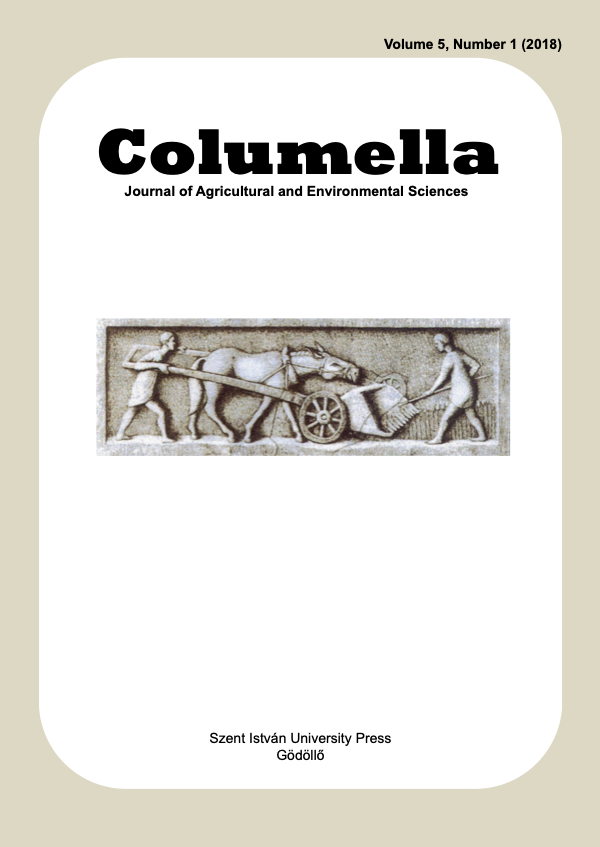Soil metabolic activity profiles of the organic and conventional land use at Martonvásár
DOI:
https://doi.org/10.18380/SZIE.COLUM.2018.5.1.27Keywords:
organic, conventional, farming system, MicroRespAbstract
These days, increasing attention has been paid to understand the relationship between different farming systems and soil microbiological processes supporting sustainable land use. Soil microbiota have been considered as a priority component in organic land managements and sustaining soil health in long term. This statement should be supported by appropriately selected indicators - physiological properties or more precisely the metabolic activity profile of the soil microbes. A recently developed method, MicroRespTM gives a promising characterization of the catabolic activity pattern of the soil microbial communities. The goal of this study was to compare the catabolic profile of soil microbial communities of organic and conventional land management in a long-term experiment at Martonvásár (Hungary) from two consecutive years by two samplings (autumn and spring). MicroRespTM with 22 different substrates were used to characterize the catabolic activity patterns of these soils. Multivariate statistical analysis revealed a significant difference between the catabolic activity profiles of the soil microbial communities of the two management systems. Considering the soil chemical parameters, the AL-P2O5-K2O, NO3--N were responsible for the divergence of the two farming systems according to the principal component analysis (PCA). The biotic (crop) and abiotic (EC, humus content, pH) parameters could affect not only the rate of soil respiration but the catabolic activity profiles as well. Organic farming increased the catabolic activity of soil microbes.
Downloads
Published
Issue
Section
License
Copyright (c) 2018 Orsolya Gazdag, Tünde Takács, László Ködöböcz, Márton Mucsi, Tibor Szili-Kovács

This work is licensed under a Creative Commons Attribution-NonCommercial-NoDerivatives 4.0 International License.






